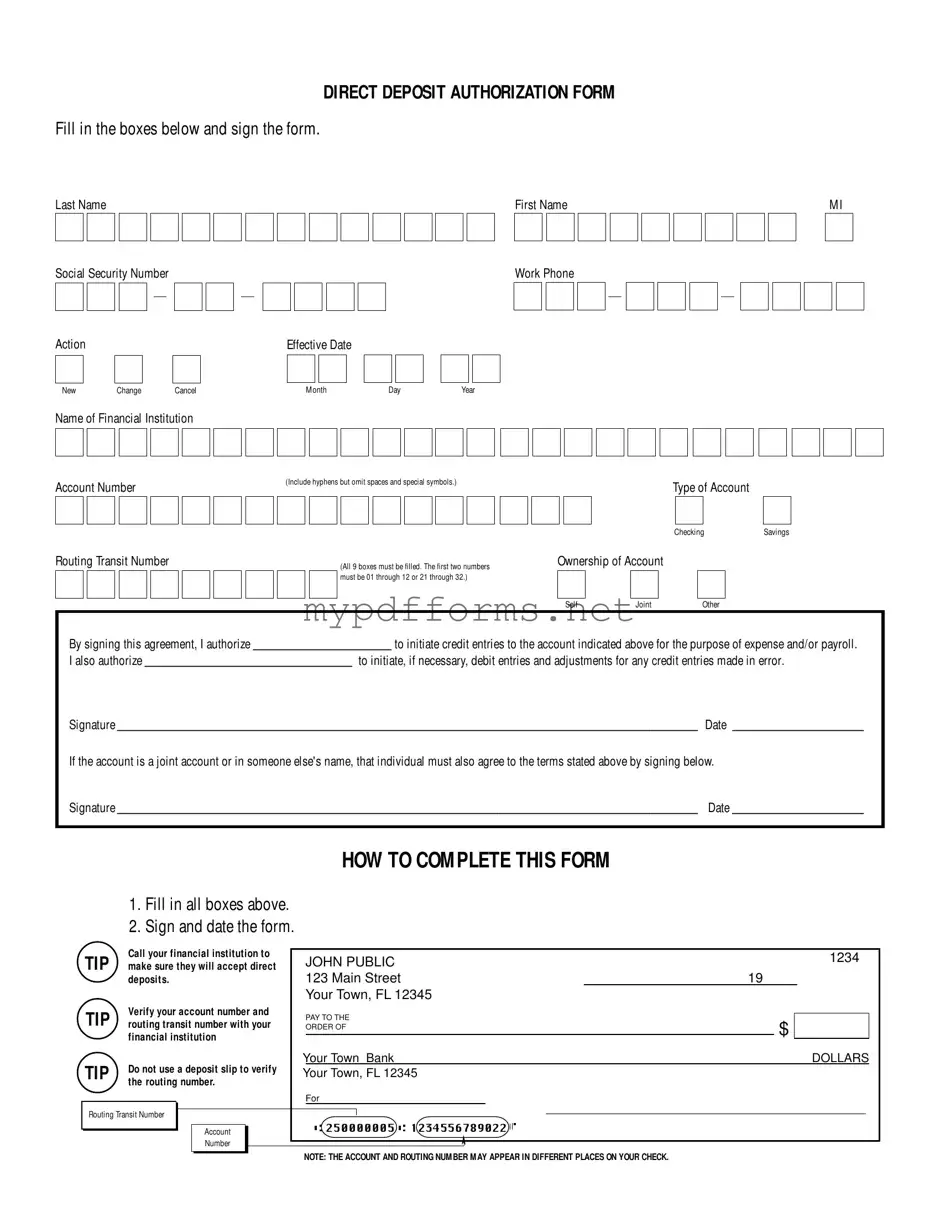The Generic Direct Deposit form serves as a crucial tool for individuals wishing to streamline their payment processes, whether for payroll or other expenses. This form requires essential information such as the individual's name, Social Security number, and contact details, all of which help ensure that funds are deposited accurately and securely. Users must indicate whether they are opening a new account, making changes, or canceling an existing direct deposit arrangement. The form also necessitates the identification of the financial institution where the funds will be deposited, along with the specific account number and routing transit number. These numbers must be carefully filled out to avoid any errors, as they are vital for directing the funds to the correct destination. Additionally, the form includes a section for the individual to authorize their employer or payment provider to initiate credit entries to their account, as well as the ability to make adjustments for any errors. If the account is held jointly or in someone else's name, that person's consent is also required. Proper completion of this form involves filling in all requested information, signing, and dating the document, ensuring that the financial institution will accept the direct deposit. Overall, the Generic Direct Deposit form simplifies the process of receiving payments, providing a convenient and efficient alternative to traditional check methods.
